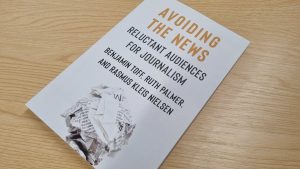Central role for co-creation and ethnography at new Nokia design studio in Bangalore
InfoWorld reports:
The studio in India is one of four satellite studios that Nokia plans to set up over the next 12 months. The satellite studios will collaborate with local designers and universities to get a better understanding of the cultural nuances relevant to mobile phone design. The next center is slated to open in Rio de Janeiro, Brazil.
The focus of the studio is on “co-creation,” or collaborative design, between Nokia’s designers, local designers and users of mobile phones. It is housed at the Srishti School of Art, Design and Technology in Bangalore, where students from the institute, Nokia’s designers and external designers will work together.
Designers at the studio will not only work in areas of industrial design and user interfaces, but also do ethnographic research to better understand people and their experiences, said Hannu Nieminen, head of insight and innovation at Nokia Design.
According to M&C, a team of top Nokia designers will engage students of Srishti in studying the use of the Internet on mobile phones and its implications for design and features of the next generation handsets.
The announcement follows a 2006 collaboration between Srishti and Nokia on Only Planet, Nokia Design’s international student programme, which began at the Doors 8 conference in New Delhi last year:
The journey to the Nokia Only Planet Conference 2006 began at the Doors 8 conference in end-March in New Delhi. Friends from Nokia Design Research offered to include the Srishti School of Art, Design and Technology, Bangalore, in the Only Planet program which was being implemented in design schools across the globe.
Soon after, Nokia sent in the Only Planet design brief. The first task for the 16 students who signed up for the project lay in engaging with the methodology of “dirty ethnography”. The students went out armed with sketch pads and cameras to record and study their environment, especially the street and food cultures of Commercial Street.
Their objective, as per the preliminary brief, was to identify key influences and sources of inspiration in three main dimensions – street (commercial values), society (family values) and culture (aesthetic values). These values were then represented in a set of “image boards”. The process allowed for the categorization of the visual details of the environment enabling students to arrive at verbal definitions and conclusions.
Eero Miettinen, Group Design Director of Nokia Design, Finland, provided extensive feedback on the image boards, their construction and their significance. He then revealed the next phase of the design brief in which the students had to generate concepts for their products.
The students now entered into serious discussions on what values would make a premium global Indian product. While brainstorming, they made case studies of extant products that they considered to be Indian in essence yet global. From their image boards and the case studies, they extracted a “basket of essences” that could add premium value to Indian products in the global market.
Each student sought to inform the conceptualization of their products with these essential values in terms of colour, form, aesthetics and function. Each one came up with several initial product ideas and then fixed on a final single product. An international five-member panel from Nokia headed by Eero Miettinen gave extensive feedback on the fleshed-out final concepts and made suggestions on the potential of some for prototyping.
Of the 16 product concepts presented before the Nokia panel, it was decided that nine would be prototyped – Opium Ray, Shara Shaiya, Plaything, Mudra, Acoustic Recliner, Kitchen Warrior, Sholay, Anubhav Yantra and Bollywood Mahal. Phase Three of the project concentrated on the prototyping, to an extent, of these concepts.
And, finally, at the end of this journey, five students and two faculty from Srishti were invited by Nokia Design Research to present its work at the Only Planet Seminar in Rovaniemi, Finland, November 28-30, 2006.
Download Srishti’s Only Planet submission (pdf, 16.2 mb, 61 pages)





[…] the Webmaster Link to Article un studio Central role for co-creation and ethnography at new Nokia design studio in […]
[…] On my way back from a tradeshow, I spied an article in the airline magazine about how companies are starting to use the “novel†technique of Ethnography to understand how customers really use their products or to test out prototypes in real-world situations (this seems to be a hot topic, because after seeing the article in the airline mag, I also found a recent post about it at Requirements Defined, a blog from the folks at Seilevel and Experientia). […]